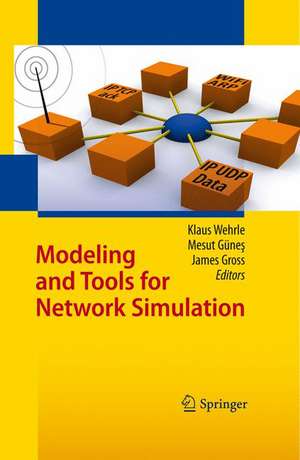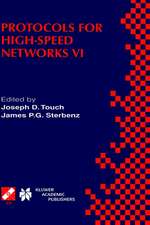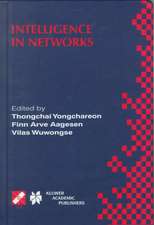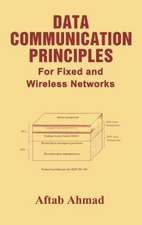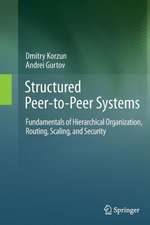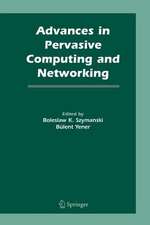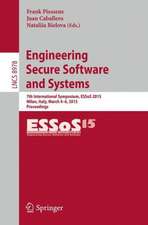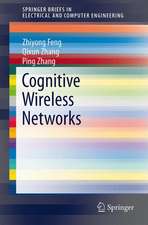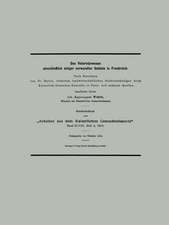Modeling and Tools for Network Simulation
Editat de Klaus Wehrle, Mesut Günes, James Grossen Limba Engleză Hardback – 29 iun 2010
| Toate formatele și edițiile | Preț | Express |
|---|---|---|
| Paperback (1) | 402.69 lei 6-8 săpt. | |
| Springer Berlin, Heidelberg – 23 aug 2016 | 402.69 lei 6-8 săpt. | |
| Hardback (1) | 550.26 lei 6-8 săpt. | |
| Springer Berlin, Heidelberg – 29 iun 2010 | 550.26 lei 6-8 săpt. |
Preț: 550.26 lei
Preț vechi: 687.82 lei
-20% Nou
Puncte Express: 825
Preț estimativ în valută:
105.31€ • 109.53$ • 86.94£
105.31€ • 109.53$ • 86.94£
Carte tipărită la comandă
Livrare economică 14-28 aprilie
Preluare comenzi: 021 569.72.76
Specificații
ISBN-13: 9783642123306
ISBN-10: 3642123309
Pagini: 256
Ilustrații: XX, 545 p.
Greutate: 0.93 kg
Ediția:2010
Editura: Springer Berlin, Heidelberg
Colecția Springer
Locul publicării:Berlin, Heidelberg, Germany
ISBN-10: 3642123309
Pagini: 256
Ilustrații: XX, 545 p.
Greutate: 0.93 kg
Ediția:2010
Editura: Springer Berlin, Heidelberg
Colecția Springer
Locul publicării:Berlin, Heidelberg, Germany
Public țintă
GraduateCuprins
I. Tools and Methods for Network Simulation.- The ns-3 Network Simulator.- OMNeT++.- IKR Simulation Library.- Open WNS.- From Simulations to Deployments.- Tools and Modeling Approaches for Simulating Hardware and Systems.- Parallel Discrete Event Simulation.- II. Lower Layer Wireless Modeling.- Physical Layer Modeling.- Link Layer Modeling.- Channel Modeling.- Selected System Models.- Wireless Networking Use Cases.- Modeling Mobility.- Modeling Handover from the Access Networks’ Perspective.- III. Higher Layer Modeling.- Modeling the Network Layer and Routing Protocols.- Modeling Transport Layer Protocols.- Modeling Application Traffic.- Modeling the Internet Delay Space and its Application in Large Scale P2P Simulations.- Modeling User Behavior in P2P Systems.- Modeling Security Aspects of Network.- Modeling the Network Topology.
Textul de pe ultima copertă
A crucial step during the design and engineering of communication systems is the estimation of their performance and behavior; especially for mathematically complex or highly dynamic systems network simulation is particularly useful.This book focuses on tools, modeling principles and state-of-the art models for discrete-event based network simulations, the standard method applied today in academia and industry for performance evaluation of new network designs and architectures.The focus of the tools part is on two distinct simulations engines: OmNet++ and ns-3, while it also deals with issues like parallelization, software integration and hardware simulations. The parts dealing with modeling and models for network simulations are split into a wireless section and a section dealing with higher layers. The wireless section covers all essential modeling principles for dealing with physical layer, link layer and wireless channel behavior. In addition, detailed models for prominent wireless systems like IEEE 802.11 and IEEE 802.16 are presented.In the part on higher layers, classical modeling approaches for the network layer, the transport layer and the application layer are presented in addition to modeling approaches for peer-to-peer networks and topologies of networks. The modeling parts are accompanied with catalogues of model implementations for a large set of different simulation engines.The book is aimed at graduate students and PhD students of computer science and electrical engineering as well as at researchers and practitioners from academia and industry that are dealing with network simulation at any layer of the protocol stack.
Caracteristici
Explores essential simulation models for wired and wireless networks Discusses in depth modeling methodology for all components of the network stack plus effects of the system environment (such as mobility or wireless propagation) Provides a detailed overview of state-of-the-art tools and development environments for network simulation Holistic approach that covers models for the entire protocol stack from the application layer to the physical layer Includes supplementary material: sn.pub/extras
